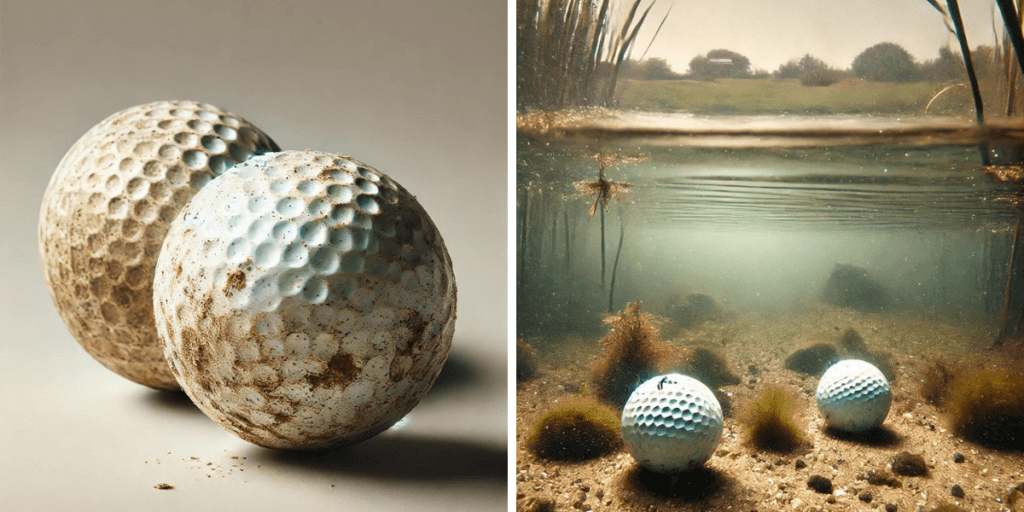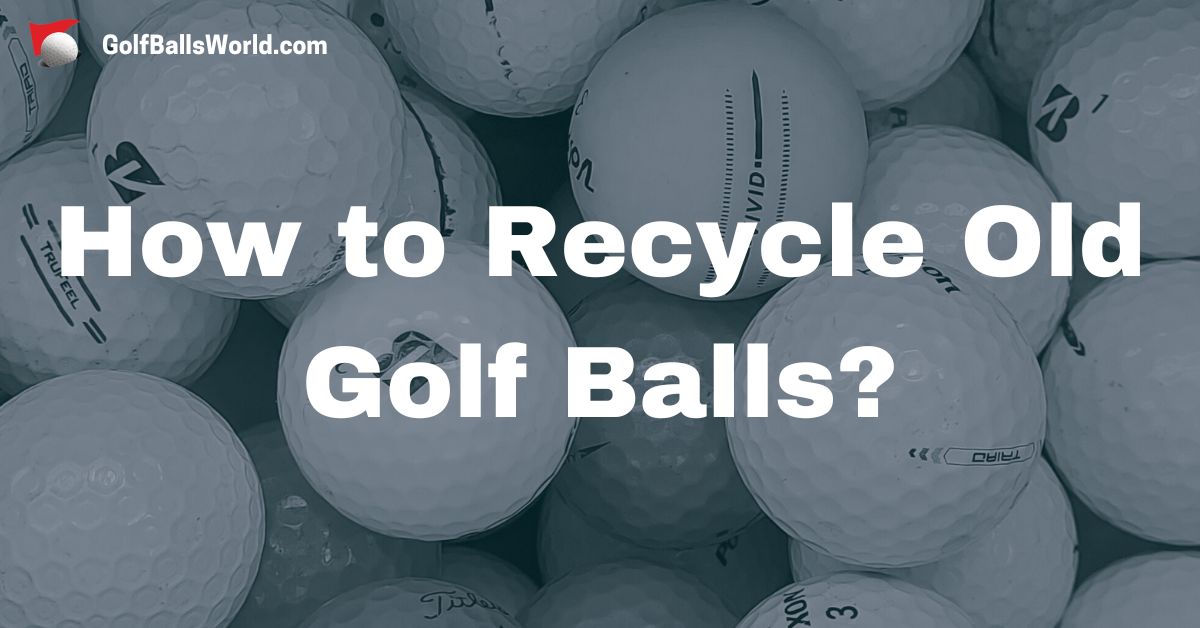This is one of the last things you think about when you start golfing. You don’t imagine there will be a pile of used golf balls in your garage before you know it. Granted, if you just started playing you might be losing more balls versus using them until the wear and tear is too much. However, you may ask yourself how to recycle old golf balls. The good news is there are different ways to do it.
From making a few extra dollars to creative ways of reusing them, you can find a solution that works. Ideally, no balls are left in nature or sent to landfills to decompose over a long time. I do not know about you, but I feel good when I know something is getting recycled or repurposed. All right, let’s get going.
Assessing the Condition of Old Golf Balls
Only after you assess your golf ball’s condition, you decide what to do with it. Not all old balls should be automatically disposed of. I know a few things about this since I caught myself changing a golf ball too soon. Most of the time it will still have a few good rounds left in it, even if it might look destined to be replaced.
Therefore, start with a close inspection. Look for cracks, chips, and any significant damage. If the ball is only lightly scuffed or has minor discolorations, it could still be playable. However, a ball with deep scratches, visible cracks, or significant degradation might be better suited for recycling or repurposing.
A quick and simple way to test a golf ball is the water test. Fill a bucket with water, drop the ball in, and see if it floats or sinks. A ball that sinks often indicates internal damage or water absorption, making it unsuitable for play. Floating balls are usually still in decent shape.
Additionally, don’t overlook branding. Balls from premium brands are often more durable and may retain better playability over time. Knowing how to assess these golf balls properly ensures you make the most of what you’ve got.

Repurposing Golf Balls for Continued Play
Sometimes golf balls reach a point when they are old, but not old enough to be disposed of. This is where refurbishing comes in. It can extend a ball’s life and place it back in your golf bag or someone else’s. Mind you, if you are a performance-oriented golfer, check my article on new vs used golf balls before you use refurbished ones.
The first solution can be cleaning. Warm water and mild soap can work wonders. Let the balls soak for a few hours. Then scrub with a soft brush to remove any stubborn dirt or grass stains. This simple step can dramatically improve their appearance and performance.
If you like taking on challenges, you can go as far as refurbishing balls yourself. The process usually includes polish, touch-up paint, and other tools that can help restore the ball’s look and feel. However, leaving it to the pros might be a wiser and time-saving choice. Several companies specialize in refurbishing used golf balls. They clean, sanitize, and sometimes even repaint them. These refurbished balls are then resold at a fraction of the cost of new ones.
Nonetheless, there are some pros and cons to using refurbished balls. On the plus side, it’s cost-effective and environmentally friendly. On the downside, they might not perform at the same high level as brand-new balls.
Creative and Environmentally Friendly Uses for Old Golf Balls
If you’ve got a pile of balls that are too worn out to play with and not worth refurbishing, there’s no need to trash them. Why not turn them into something unique and fun instead?
For the crafty types, old golf balls can be the perfect material for DIY projects. They’re sturdy, easy to paint, and versatile. Consider creating garden decorations like ladybugs or bumblebees by painting them with vibrant colors. You can even use them as part of a garden path or edging. Another fun idea is making Christmas ornaments. Just add some hooks and get those paints out. It’s a great project to get the kids involved in too.
How about an unusual piece of art made entirely from golf balls? Anything from sculptures to wall art, your imagination is the limit. Even something as simple as gluing them together to create a unique lamp base or flower pot can be a fun weekend project.
Not just limited to art, golf balls can be repurposed for practical uses. They make great drawer or cabinet knobs with just a little modification. Also, can even serve as perfect-size weights or stress balls. If you’re into fishing, using old golf balls as buoys for your fishing nets is another way to give them a second life.

Recycling Golf Balls
Then there is also recycling. Various organizations and programs, like Golf Ball Planet, are dedicated to buying used golf balls and refurbishing them for further use. You can also donate them to companies that specialize in recycling. These companies clean, sort, and either resell or repurpose them in various ways. Some even partner with golf courses to collect used balls directly from the course, making it convenient for everyone involved.
There are also non-profit organizations that accept golf ball donations. These often use the funds raised from recycling or reselling to support charitable causes. Participating in these recycling programs is usually straightforward. Many companies offer mail-in programs where you can ship your used golf balls. Additionally, some golf retailers and pro shops have drop-off points for used balls. This makes it easy to recycle them during your next visit.
Encouragement for Responsible Disposal
Think of this, every golf ball repurposed or recycled means fewer end up in landfills. It is a win for the environment and a step towards a more sustainable lifestyle. Start by assessing their condition and from there find a new path for your used balls.
Even if you find golf balls on a course, think of picking them up instead of tossing them back into the bushes. With a bit of effort, you can turn them into something useful and eco-friendly. Send them for refurbishing or refurbish them yourself, and use them as decoration, there are numerous possibilities. At the end of the day, every small action counts.
Related:
- Golf Ball Cleaning and Maintenance – Tips for Better Care
- New vs Used Golf Balls – Which Are Better for Your Game?
- What Is the Shelf Life of a Golf Ball?

